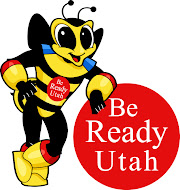CITIZEN CORPS - Uniting Communities Preparing The Nation
Following the tragic events of September 11, 2001 and the recurring reminders of the powerful forces of natural phenomenon, we are reminded of our vulnerabilities, more appreciative of our freedoms, and more understanding that we have a personal responsibility for the safety of our families, our neighbors and our nation. We also know that we can take action now to help protect our families, help reduce the impact a disaster has on our lives, and help deal with the chaos when an incident does occur.
The Utah Citizen Corps Mission is to harness the power of every individual through education, training, and volunteer service to make communities safer, stronger, and better prepared for emergencies and disasters of all kinds. The State Citizen Corps Council serves as a resource link between the national Citizen Corps initiative and local and regional councils throughout Utah. The state council encourages councils to bring together local leaders, emergency management, citizen volunteers, faith-based communities, business and civic organizations, and the network of first responder organizations to help build prepared and resilient communities. Community members are encouraged to know the potential risks in their areas, have emergency kits available for all members of the family, have and practice a family response plan, be trained in CERT and CPR, and become involved in their local neighborhood watch program and community preparedness efforts. For more information go to www.citizencorps.utah.gov
All above information also found in our Guide To Personal and Family Preparedness handout.
Blog Revising
11 years ago










